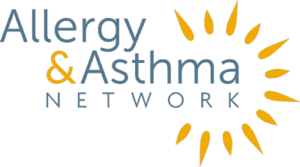Planning for School with Food Allergies
- Home
- |
- Food Allergies
- |
- Planning for School with Food...

There are a number of things you and the school can do to plan for your child safety at school. Education, advance planning, and clear, confident communication with school staff and other parents about food allergies are the best ways to ensure your child’s safety.
How do I prepare for the school year when my child has food allergies?
Make arrangements to see your doctor or allergist during the summer to monitor your child’s allergy and update their medication forms and Allergy & Anaphylaxis Emergency Care Plan.
Download Back to School Checklist for Allergies ➡
Download Back to School Checklist for Asthma ➡
You can make an appointment, preferably before the beginning of the school year, to go to the school and discuss your child’s allergy with your child’s teacher, school nurse and/or the person designated to care for children at your school.
You can talk about any accommodations that your child may need – in the cafeteria or classroom and drop off forms, medication and your child’s Emergency Care Plan. Consider providing the school with written permission to call your child’s pediatrician with any questions.
It’s good to make a plan to update the school with any new information or inform them of any anaphylactic reactions that your child experiences outside of school.

Quick 3-5 minute videos on asthma, allergies, and related conditions.
How do schools manage food allergies?
Allergy management at school has four major components:
Planning and coordination of care
The school needs to identify the students with food allergies and obtain a written statement from the doctor to confirm the allergy (there can be confusion about whether a child has a food intolerance or true allergy). The school should coordinate with the teachers, cafeteria staff and family to be sure that medication is at school, food substitutions are available and measures to prevent exposures are in place. And no matter how prepared the school is to prevent allergic reactions, they need to be ready to deliver emergency care if needed.
Educating staff, students and families
School staff, students and families need evidence-based information to be educated about:
- Signs and symptoms of an allergic reaction
- Prevention strategies to prevent exposures
- How to administer an Emergency Care Plan
- Understand federal laws that protect children including FERPA and Section 504
Providing a safe environment
Schools need to be aware of potential allergens and strategies to prevent allergen exposures. Policies and procedures need to be in place to protect all children at school.
Prompt emergency response
Any staff member who supervises a child needs to know how to identify anaphylaxis, get help and administer the Emergency Care Plan. Staff need to know how to reach the school nurse or designated responder, how to access and administer epinephrine via injector to the child and what to do following an anaphylactic reaction.
NOTE: Hand sanitizers work well to help kill viruses on hands, but they do not “clean away” food allergens. Continue to use soap and water or wipes to remove food allergens from hands and surfaces.

Should schools ban foods, especially peanuts?
Peanut-free policies may not be effective in preventing reactions. Schools must use proven strategies that include hand/mouth washing, no sharing of food and awareness of a child’s food restrictions. Studies have shown that:
- Peanut residue is easily cleaned from hands with soap and from surfaces with commercial products.
- Smelling peanut butter does not cause allergic reactions.
- Peanut dust or peanut residue may accumulate on surfaces where peanuts or peanut butter are eaten regularly. Touching the dust or residue on surfaces and then placing fingers in the mouth can cause an allergic reaction.
- According to ACAAI, peanut proteins can become airborne during the grinding or pulverization of peanuts, and inhaling peanut protein in this type of situation could cause an allergic reaction.
Simply stating that a school is “peanut free” does not guarantee that it is. Even with strict measures, some peanut allergen can be present. “Peanut free” designations can decrease vigilance in the school community. It’s important to have school staff educated on food allergy and prevention strategies that lead to a “peanut-safe” environment.
Are students with food allergies bullied?
Children with food allergies are at a greater risk of being bullied.
What parents can do
- If you suspect bullying, talk to your child. If they are reluctant to talk, ask leading questions to open the conversation.
- Let your child know that if they see bullying or if they experience it, it’s important to talk about it with you, a school staff member or a sibling.
- Talk about how to stand up to children who bully. The best defense is to remain calm, ignore the remarks, tell the bully to stop and simply walk away.
- Don’t try and fight the battle alone. Talk to school professionals about how to protect your child.
What schools can do
- Put anti-bullying policies in place – make it a school responsibility to resolve conflicts in a positive manner.
- Teach specific skills and values in the classroom. Teach children how to problem solve.
- Establish and enforce consequences for bullying. Combine sanctions with supportive interventions that encourage positive behaviors.
No Appetite for Bullying
Visit No Appetite for Bullying more information and resources about food allergy bullying that are available to create solutions and encourage food allergy acceptance.
Are schools allowed to have stock epinephrine?
Every state, except Hawaii, either mandates or allows stock epinephrine in the school setting. This means that the school will keep a supply of epinephrine available in the event it’s needed for an emergency. It’s important to be familiar with the law for stock epinephrine in your state to know whether the school is eligible to have stock epinephrine available. However, not all schools allowed to have stock epinephrine will have it, so check with your child’s school to see if it is available.
To implement a stock epinephrine program in your school, it’s important to follow the “Steps to Stock” which are:
Policy
The school district needs to adopt a policy to guide the use of stock epinephrine. National Association of School Nurses offers a sample school district policy.
Protocol
The school district supports a protocol to guide use of stock epinephrine
National Association of School Nurses offers a sample anaphylaxis and emergency epinephrine administration protocol.
Prescription
The school district needs to identify a prescriber to write the prescription and standing order. The American College of Allergy, Asthma and Immunology offers an Allergists’ Toolkit.
Partnership
The administrator and school nurse partner to implement stock epinephrine policy with school staff. The Centers for Disease Control (CDC) offers guidance for school administrators in implementing a policy.
Download the Steps to Stock Epinephrine Infographic
What additional school training resources are available?
Download Education for School Staff ➡
Practical points:
- Practical education of school staff can be held at a schoolwide faculty meeting to teach signs and symptoms of allergies and generalized allergy care.
- Specific, individualized instruction should be provided to staff supervising a student with a known allergy who is at risk for anaphylaxis.
Epinephrine procurement programs
Schools can obtain free epinephrine auto-injectors through EpiPen and its EpiPen4Schools program.
Forms
Allergy and Anaphylaxis Emergency Plan
Every student identified as at-risk for anaphylaxis needs to have a completed Allergy and Anaphylaxis Emergency Plan or its equivalent.
Posters
Staff Training Resources
CDC Voluntary Guidelines for the Management of Food Allergies in Schools and Early Care and Education Centers
In consultation with the U.S. Department of Education and a number of other federal agencies, the Centers for Disease Control and Prevention (CDC) developed the Voluntary Guidelines for Managing Food Allergies in Schools and Early Care and Education Centers in fulfillment of the 2011 FDA Food Safety Modernization Act to improve food safety in the United States.
The Voluntary Guidelines for Managing Food Allergies provide practical information and planning steps for parents, district administrators, school administrators and staff, and ECE program administrators and staff to develop or strengthen plans for food allergy management and prevention. The Voluntary Guidelines include recommendations for each of the five priority areas that should be addressed in each school’s or ECE program’s Food Allergy Management Prevention Plan:
- Ensure the daily management of food allergies in individual children.
- Prepare for food allergy emergencies.
- Provide professional development on food allergies for staff members.
- Educate children and family members about food allergies.
- Create and maintain a healthy and safe educational environment.
The National Association of School Nurses offers a checklist to implement the Voluntary Guidelines for Managing Food Allergies in Schools and Early Care and Education Programs
National Association of School Nurses
The National Association of School Nurses (NASN) offers its Get Trained training tools and sample policies regarding the management and care of students with food allergies and anaphylaxis. The training tools cover:
Trainer Preparation
- Presentation Slides
- School Nurse Trainer Notes
- Training Program Checklist
Training Tools
- Presentation: Get Trained for School Staff
- Presentation Handouts
- Handout: Preventing Allergic Reactions
- Scenarios for School Staff
Sample Policies and Protocols
Epinephrine Policies and Protocols

AllergyHome.org: Schools
AllergyHome’s School Staff Training Module is a 30-minute module to assist the school nurse in training school staff to manage life-threatening allergic reactions and increasing food allergy awareness. The training module is consistent with the CDC’s Voluntary Guidelines for Managing Food Allergies in Schools and Early Care and Education Programs. The training module includes:
- School Staff Quiz – A certificate of completion is available to be printed or emailed after passing the exam.
- Label Reading Handout
- Preventing Cross-contact Handout
- Be Prepared to R.E.A.C.T.
- AllergyHome Resource Flyer for School Nurses
FAME
The Food Allergy Management & Education (FAME) manual and tool-kit is designed to help school nurses, administrators, and staff work with parents and students to create a safer school environment and develop a comprehensive school-based food allergy program. Features a 504 Plan decision chart and a list of accommodations in classrooms, the cafeteria, and on school buses and field trips.
No Appetite for Bullying
No Appetite for Bullying aims to make a positive, lasting impact on the lives of children, teenagers and students with food allergies, by encouraging them, their parents, and peers to be voices against food allergy bullying.
School Nurse Chronic Health Assessment Tool – SN CHAT
Resources from the National Association of School Nurses (NASN)
A tool developed for school nurses by a school nurse, SN CHAT offers tools and resources to help school nurses manage chronic health conditions in the school setting.
School nurses can use SN CHAT®:
- Guide conversations in person or via phone with a student’s parent, guardian, or caregivers
- Learn about the health needs of an individual student
- Decide if you should create a school plan for a student, which may include an Emergency Action Plan (EAP) and/or an Individualized Healthcare Plan (IHP)
Are there other conditions that can look like or complicate allergies
There are other types of conditions that can mimic allergies, but are different than an IgE-mediated allergy. The symptoms, diagnosis and treatment can vary depending upon the condition. Here are some of them.
Food-related conditions that can have symptoms similar to food allergies include:
See Related Pages
- Food Allergy Treatment & Management
- Mental Health and Living with Food Allergies
- Living with Food Allergies
- Food Allergies and Food Insecurity in America
- What Can You Do If You Can’t Afford Allergen-Free Foods?
- Planning for School with Food Allergies
- Peanut Allergy Treatment
- Alpha-Gal Syndrome and Meat Allergy
- Milk Allergy: Causes, Symptoms, Diagnosis & Treatment





